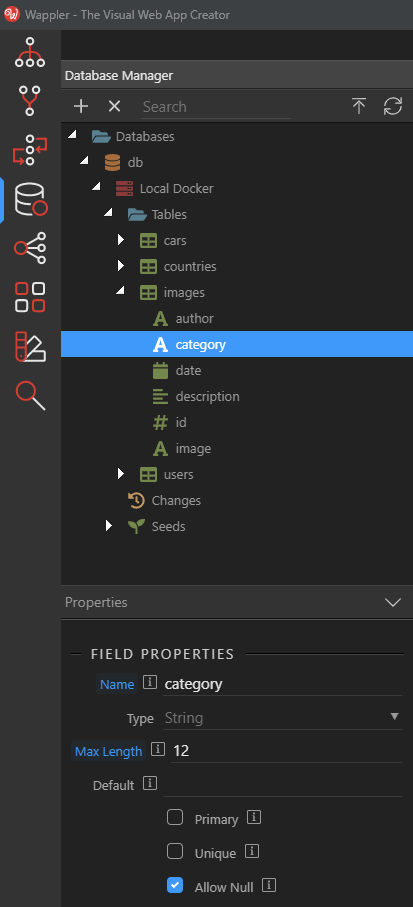
I just can’t in good ethical faith write one.There are certain exceptions within copyright law that allow for creativity and innovation. But there are dozens of great tutorials out there on the subject. NOTE: For those wondering why I haven’t gone into detail about significance testing for P-values, it’s because I believe that field of statistical study is generally arbitrary and altogether intellectually bankrupt. I encourage readers to learn more about regression before attempting any, as they are a complicated and tricky tool and can lead a researcher astray quickly if used incorrectly. Maybe Sack% would be a more useful tool because the sack totals are merely telling us he played more (and QBs who played more probably had better performances because otherwise they would have been benched).Īnyway, I hope this has been helpful. That’s a red flag right there for a bad variable. Even a QB who has been sacked will only see his Cmp% moved by 1.5%. And it doesn’t take much work realized which variable is more important. Coefficients: The coefficients tell us both the formula of the regression (Cmp% = 36 + 0.02 * Sacks + 3.03 * Y/A) but also the strength of the variables involved.In this case, though, R 2 and Adjusted R 2 are about the same, so whutevz. With multiple variables, it’s important to look at Adjusted R 2 because it helps combat the unintentional increase in R 2 caused by just adding more data. Truth is, we have to be as intellectually honest as possible and determine how much explanation is the right amount of explanation. R 2 Results: What is a good R 2? Well, higher is always (well, usually) better, but there’s no clear perfect R 2.

(See that above article for more details.) If you start to see anything other than a circle, in any of your residual plots, then you’ll need to rework your regression. Residual Plots: These look good! You want a shotgun blast looks.Let’s break down the three big areas one at a time, in the typical order I look at them: So this is kinda what it will look like after a regression. The output is something like this: Here are the big three components of a regression. So in the X Range, I’m going to select the Q and R columns (titles and all). In short, I’m asking: Can Y/A and sack totals predict a QB’s accuracy? I’m regression this Cmp% data against the quarterbacks sack total and yards per attempt (Y/A) total. In this instance, I’m choosing a big column of completions percentage data from (from this data: NFL QB seasons since 1969 with min. I prefer to include the column headings so that the output screen will be more easily understood. In the Y Range text box, you will want to add only a single column of data. You should then get this screen: The Y Range will be what you are regression against, so to speak. That will open a simple dialogue with a list of various operations. Now, after this first step, you should have a new option in your Data tab. Select the top option in the available Add-Ins (“Analysis ToolPack”) and then click “OK.” You can also add in these other ones if you’re feeling frisky. Why is this not enabled by default? Who knows? Maybe Bill Gates. This button opens a dialogue that allows us to turn on the data Analysis ToolPack. In the File > Options > Add-Ins section, you’ll notice a “Go…” button at the bottom of the window. The first thing we’ll need to do is enable that ToolPack. But we can still answer those other two questions - as well as add more variables - using Excel data Analysis ToolPack. A regression won’t tell us direction of causality. The first issue is a matter of deeper research. Does the regression fit the data? And ANOVA analysis can be useful in augmenting what the R 2 tells us.
#Fangraphs data creator how to#
:max_bytes(150000):strip_icc()/best-free-online-database-creators-3486264-A-v1-5b3688954cedfd0036f40333.png)
So now we have a regression! The formula ( HR = 3.5367 * SO + 29.166) tell us there is a positive connection between home run totals and strikeout totals. In that menu, check the boxes for “Display Equation on chart” and “Display R-squared on chart”: These two boxes give you the bare minimum of data necessary to interpret a regression. Now double-click the trendline to produce the “Format Trendline” window. With the chart selected, choose to add a linear trendline (Layout > Trendline > Linear Trendline): Adding a linear trendline will create a basic linear regression. That will give you something like this: Here’s a scatterplot of the 2015 Durham Bulls’ strikeout and home run totals, min. For the first method, just select two columns of data and make a scatterplot (Insert > Scatter).


 0 kommentar(er)
0 kommentar(er)
